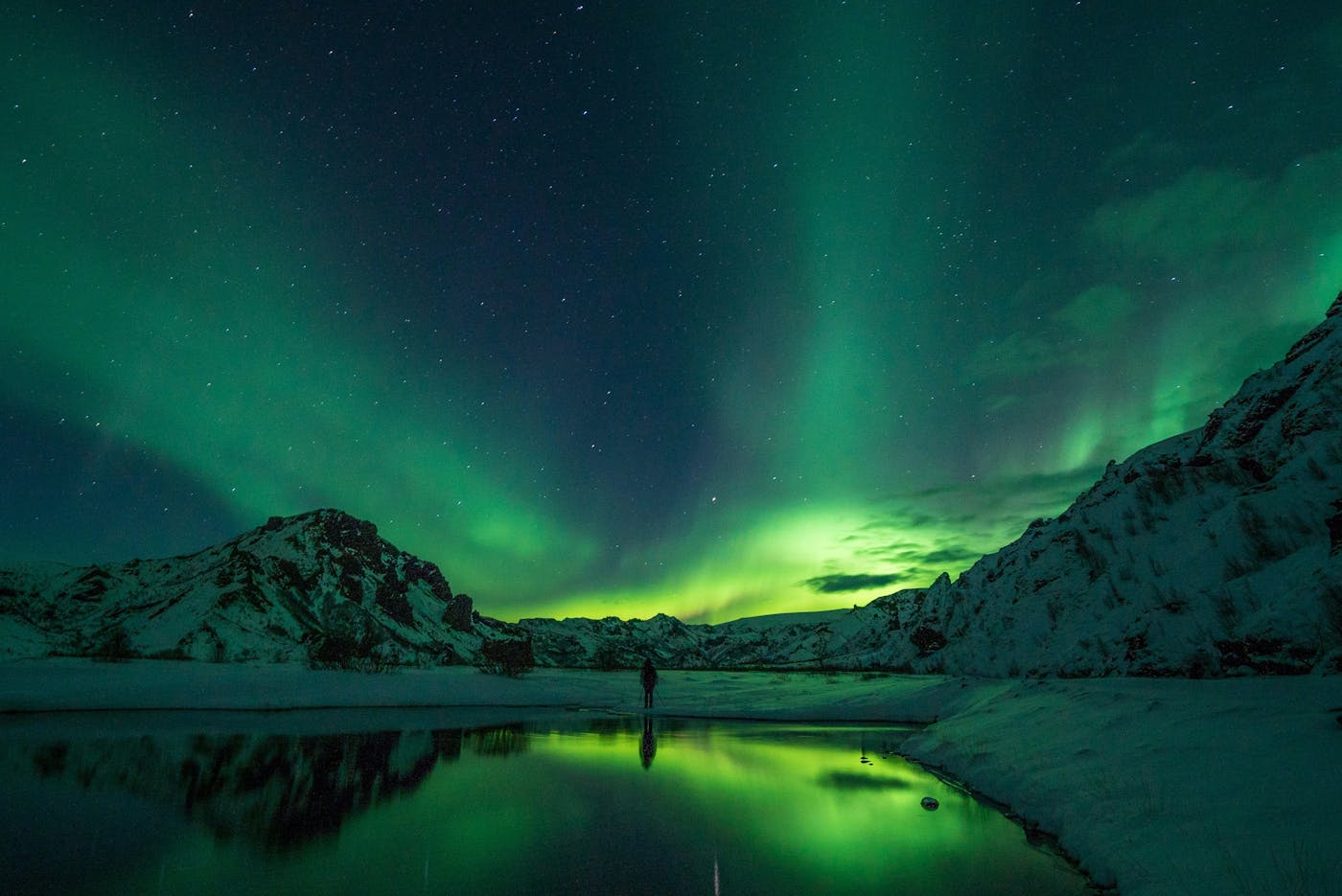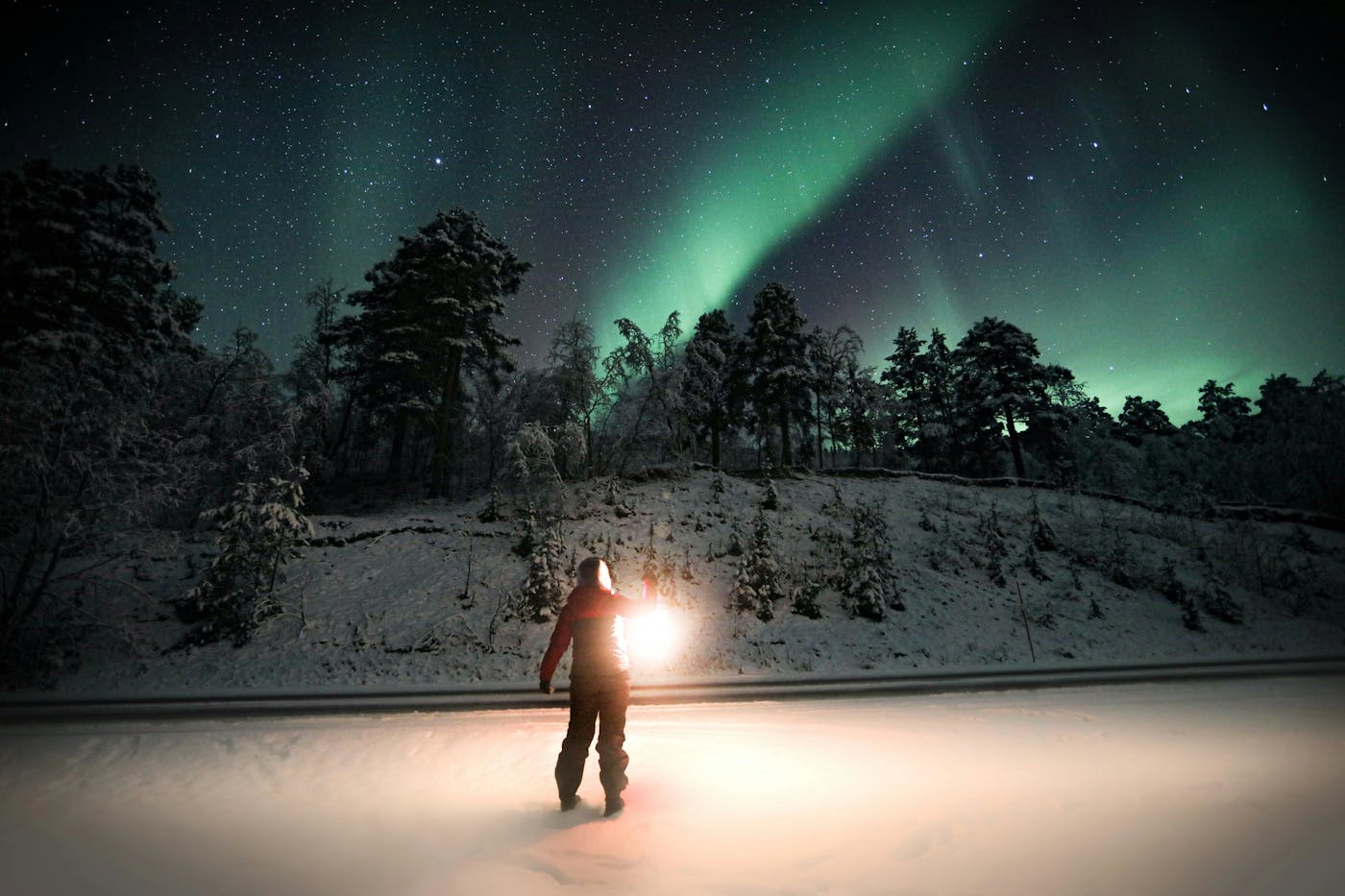Essential factors for Aurora viewing
While choosing the right time of year is crucial, these additional factors can make or break your aurora experience:
- Darkness: Escape light pollution!
- Clear Skies: This is your biggest ally and your biggest foe. Even if the aurora is dancing above the clouds, you won't see it. Always check cloud forecasts diligently for cloud cover.
- Northern Lights Forecasting Tools: Use Hello Aurora app to get real-time forecast and live updates from aurora hunters in the area.
- Location, Location, Location: Being within the "auroral oval" (the band around the magnetic poles) dramatically increases your chances, even on nights of lower solar activity. This includes destinations like Fairbanks (Alaska), Yellowknife (Canada), Tromsø (Norway), Rovaniemi (Finland), and Reykjavik (Iceland).
Frequently asked questions about Northern Lights timing
Q: When is the absolute best month to see the Northern Lights?
A: Statistically, March or September/October (around the equinoxes) are often considered optimal. These periods frequently see increased geomagnetic activity while still offering sufficiently dark nights.
Q: What time does the Northern Lights appear?
A: The Northern Lights can be visible after sunset. You can check this guide out to get the peak aurora hours sighted by Hello Aurora users month by months.
Q: Can you see the Northern Lights in summer?
A: It's extremely rare and virtually impossible in the traditional aurora hotspots due to the midnight sun. During summer, the sun never sets fully in polar regions, making the sky too bright to see the faint aurora.
How long do the Northern Lights last?
Aurora displays can vary wildly. They might appear for just a few minutes before fading, or they could dance across the sky for several hours. Patience is key!
Q: Can I see the Northern Lights after 2026?
A: Yes, absolutely. The Northern Lights remain visible year-round in Arctic regions, with the best viewing during winter months when nights are longest. While it's true that solar activity follows an approximately 11-year cycle and is expected to decline after reaching its peak around 2024-2026, this doesn't mean the aurora will disappear. During the solar minimum phase, aurora displays may be somewhat less intense and occur less frequently than during peak years, but they still appear regularly, especially at higher latitudes.
The Northern Lights are a natural phenomenon driven by the interaction between solar wind and Earth's magnetic field, which continues regardless of the solar cycle phase. With proper planning, patience, and favorable conditions (clear skies, minimal light pollution, and geomagnetic activity), you'll still have excellent opportunities to witness this spectacular display throughout the solar cycle.
Q: Do I need a tour to see the Northern Lights?
A: You don’t always need to join a Northern Lights tour to experience the aurora borealis. If you have access to a car and feel confident driving in winter or remote conditions, you can go aurora hunting on your own. Many travelers use the Hello Aurora app to track real-time aurora forecasts, see where aurora are spotted in real-time, connect with other aurora chasers, and discover the best viewing locations.
That said, joining a Northern Lights tour can significantly increase your chances of seeing the aurora. Local guides have in-depth knowledge of the region, constantly monitor weather and solar activity, and provide warm gear and expert guidance. Many professional tour operators also rely on the Hello Aurora app to plan and adapt their routes based on live data.
Q: What Kp index is good for seeing the Northern Lights?
A: KP Index is not helpful when you are already in the aurora country. While the Kp index can give you a general idea of aurora activity, it's not the most reliable data for predicting the Northern Lights. Many tourist mistakenly think a high Kp index guarantees visibility, but real-time forecast matter just as much—if not more.
For example, in Northern Norway, Iceland, or Finnish Lapland, you can often see the aurora even with a Kp index as low as 1 or 2, thanks to the high latitude. Meanwhile, a high Kp index might mean nothing if the sky is cloudy or you're in an area with too much light pollution.
Instead of relying solely on the Kp index, use real-time aurora tracking apps like Hello Aurora, which combine short-term aurora forecasts, community sightings, and hyper-local conditions to improve your chances of catching the lights.
Q: When will the Solar Cycle 26 starts?
A: Based on the latest information from NOAA Space Weather Prediction Center, Solar Cycle 26 is expected to begin sometime between January 2029 and December 2032, though the exact date hasn't been confirmed yet. Official organizations like NOAA and NASA do not yet produce predictions for Solar Cycle 26.


